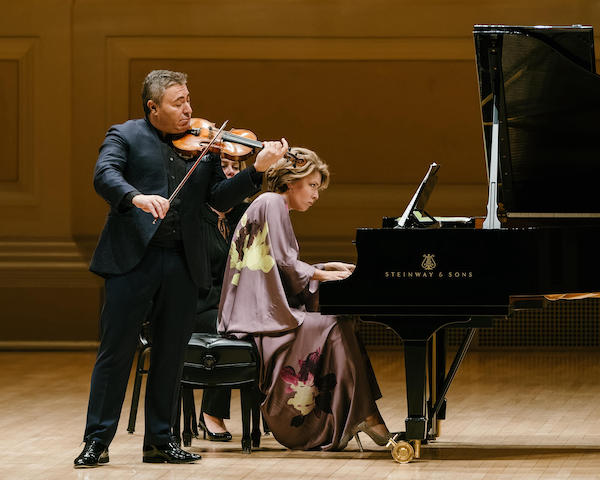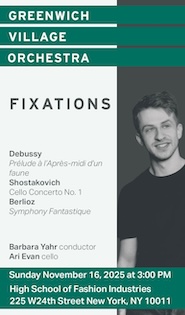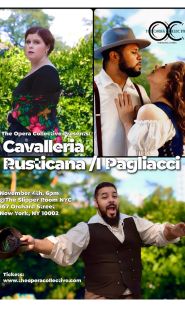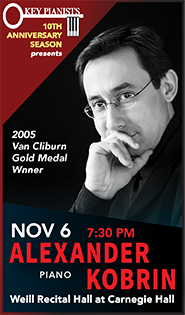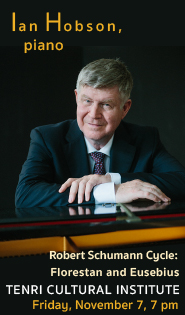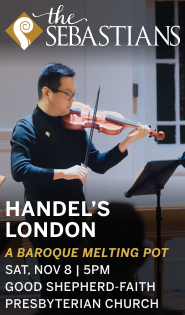Vengerov, Osetinskaya spend an intimate afternoon with the Schumanns, Prokofiev
The powerhouse duo of violinist Maxim Vengerov and pianist Polina Osetinskaya checked their most formidable chops at the door in Carnegie Hall Sunday afternoon, inviting listeners instead to an intimate celebration of love and friendship.
The recital’s first half opened a window on the banner year 1853 in the circle of Clara and Robert Schumann, when both of them were composing industriously and receiving distinguished visitors. One of these was a 20-year-old aspiring composer named Johannes Brahms, for whom Robert predicted a brilliant future. Another was the revered violinist Joseph Joachim, whom the whimsical Robert welcomed with a musical guessing game that involved one of his pupils and his new friend Brahms.
Sunday’s first glimpse of this time of lyricism and fun was Clara’s Three Romances, Op. 22. Dedicated to Joachim, these poetic pieces testified, in their understated way, to the elegance of the great violinist’s playing and Clara’s skill as one of the most admired pianists of her day.
Vengerov and Osetinskaya traded phrases fluently in the brief first Romance and the more venturesome second, to smooth accompaniments. In the third, marked by the composer “passionately fast,” the pianist led the way with gently turbulent arpeggios and quick shifts of mood, while the violinist discreetly stayed within his lane.
Just for maximum contrast, the duo then launched into Brahms’s ferocious Scherzo from the so-called “FAE” Sonata, a musical heffalump concocted by Schumann, Brahms, and Albert Dietrich to honor Joachim. (The violinist’s personal motto “Frei aber einsam,” free but lonely, yielded the notes F, A, and E, on which the sonata was based.)
In Sunday’s exciting performance, the blazing tempo, slashing violin and two-fisted piano left no doubt what young Brahms’s idea of “passionately fast” was. But in between the flashing octaves and wrenching rhythmic turns, the players also made that special Brahmsian brand of heroic lyricism soar aloft. (Not surprisingly, Joachim had no trouble guessing the composer of this part of his sonata.)
Sadly, 1853 was also the year Robert Schumann’s mental illness began to overtake him, and Sunday’s first half closed with a curious last chapter to the Joachim story, Robert’s rarely-performed Violin Sonata No. 3 in A minor, which he created by adding two new movements to the two he wrote for the “FAE” Sonata.
For whatever reason—whether she considered it unfinished or clouded by illness—Clara omitted this sonata from her edition of Robert’s collected works, and it wasn’t published until 1956, or performed within Carnegie’s walls until a Weill Recital Hall concert in 2016.
Like other late Schumann works, the sonata inclines toward dark colors and the instruments’ lower ranges. Joachim, however, praised its “focused, energetic style,” and Sunday’s performers made a strong case for it. The athleticism of their leaping, emphatic chords and rocketing arpeggios in the first movement seemed to confirm the strong impression young Brahms made on his mentor. Schumann’s newly composed scherzo, however, was entirely characteristic of him, as the piano rolled in shapely waves with the tuneful violin riding on top.
The last two movements, carried over from the “FAE” piece, consisted of a flowing Intermezzo for the cantabile violin, accented by pearly top notes or phrases in the piano, and a lively finale, alternately assertive and tender, with rapid give-and-take between these well-matched players.
For Schumann and Brahms, composing sonatas in 1853 might already have been considered old-fashioned; for Sergei Prokofiev in 1943, it was downright neoclassical. Surely Classical models shaped the style of his convivial Violin Sonata No. 2 in D major, Op. 35bis, which occupied most of the second half of Sunday’s program. (The militant “war sonatas” for piano, from the same period, were another story.)
Here again, one sensed the presence of friends in the music: the flutist with whom Prokofiev was evacuated to the remote city of Perm during the worst of the war, and for whom he originally composed this sonata; and the legendary violinist David Oistrakh, who requested the violin-and-piano arrangement heard Sunday.
But first, another songful prelude: Prokofiev’s Five Melodies, Op. 35bis, composed as wordless songs for a Russian mezzo-soprano in 1920, arranged three years later for the composer to perform with the violinist Paul Kochanski. As directed in the score, Vengerov artfully used a mute, ethereal harmonics, different bow weights, and portamento phrasing to produce violinistic equivalents of a singer’s tone colors and inflections. Despite the brevity of these “melodies,” Osetinskaya’s vivid pianism created many moods, not just five.
No doubt Vengerov could cite Oistrakh himself as authority for the considerable liberty he took with tempos and rhythms in the sonata’s serene first movement, but a little more neoclassical precision would have been welcome in this case. Prokofiev put the piano largely in charge of the development section, and Osetinskaya’s assertiveness there helped hold this episodic movement together to the end.
Marked Presto, the scherzo was all that and more, as light as air split by lightning bolts. In contrast, the lighthearted Andante sang and danced for a short spell, setting up the strutting finale, played in a firm tempo that still allowed for virtuoso flourishes by both players, with broader episodes that only heightened the music’s splendor. And so this recital, which had started so intimately, ended in an ovation.
Well, not quite ended. Three encores, one expansive and two brief, all in violin-and-piano arrangements, sent the audience home happy: Rachmaninoff’s dreamy “Vocalise,” the jaunty March from Prokofiev’s opera The Love for Three Oranges, and a lush-toned rendition of Variation 18, the “big tune” from Rachmaninoff’s Rhapsody on a Theme of Paganini.
Carnegie Hall presents pianist Daniil Trifonov performing works by Rameau, Mozart, Mendelssohn, and Beethoven 8 p.m. Dec. 12. carnegiehall.org
